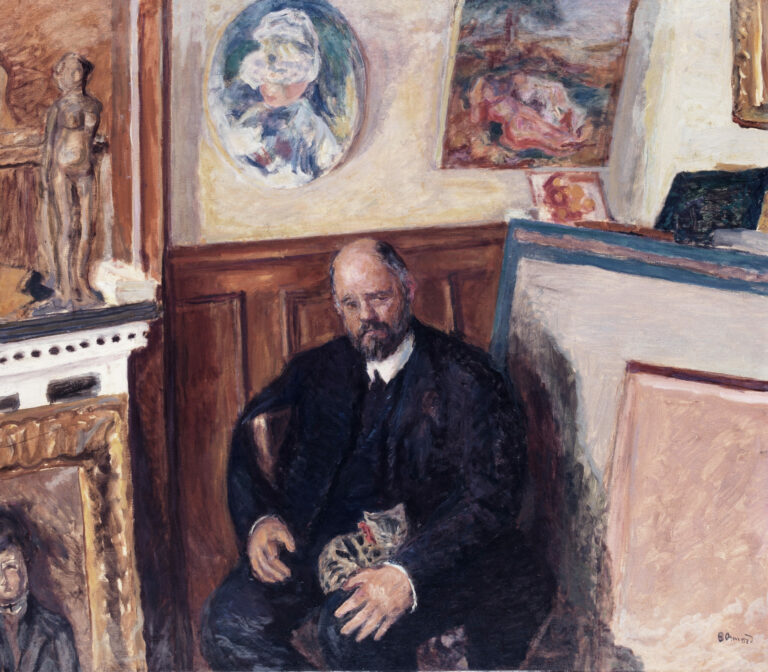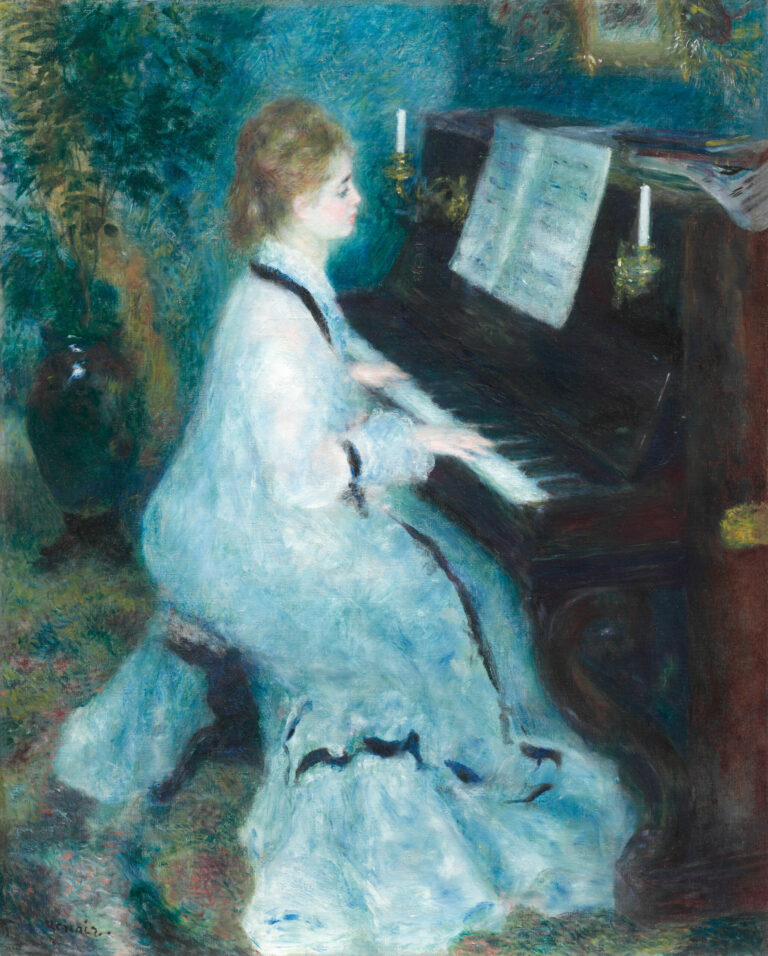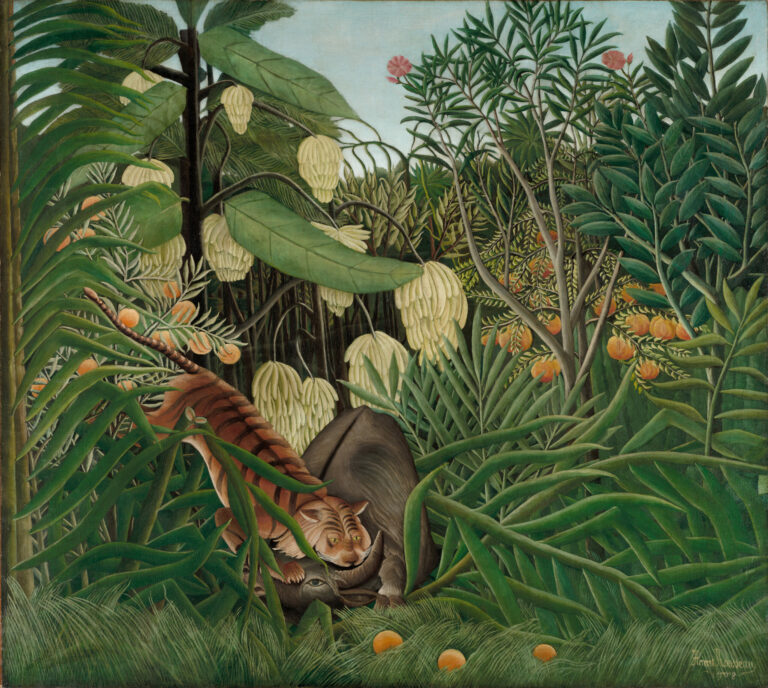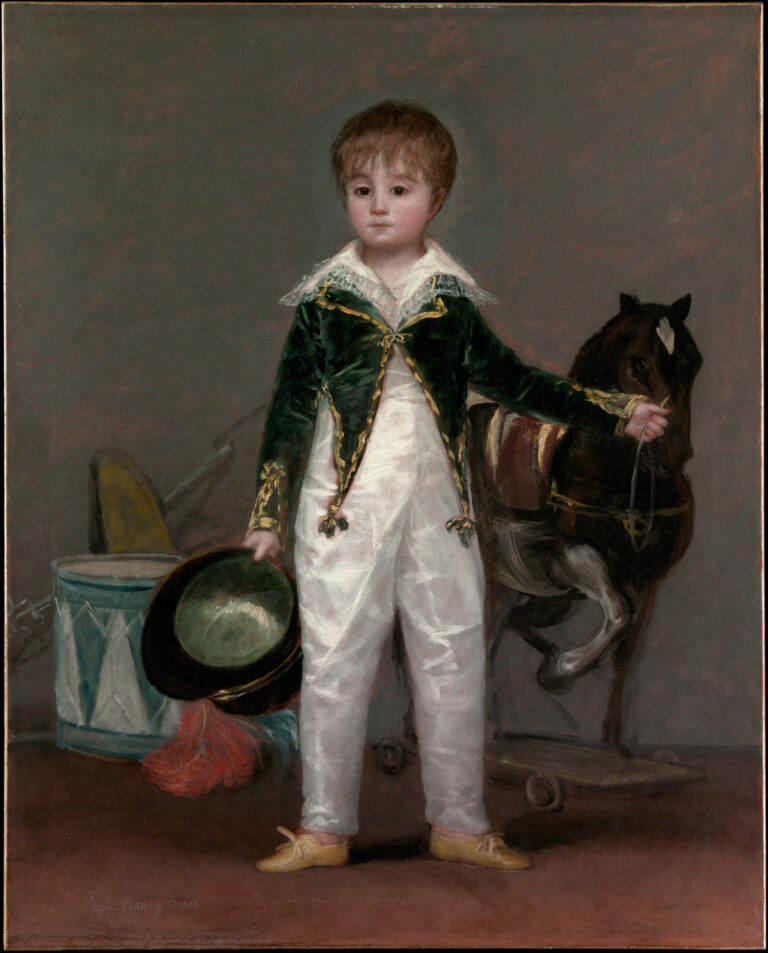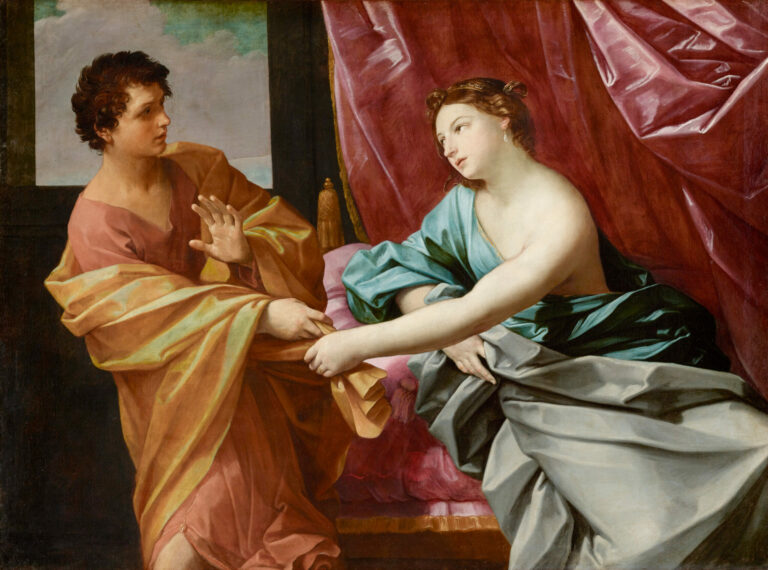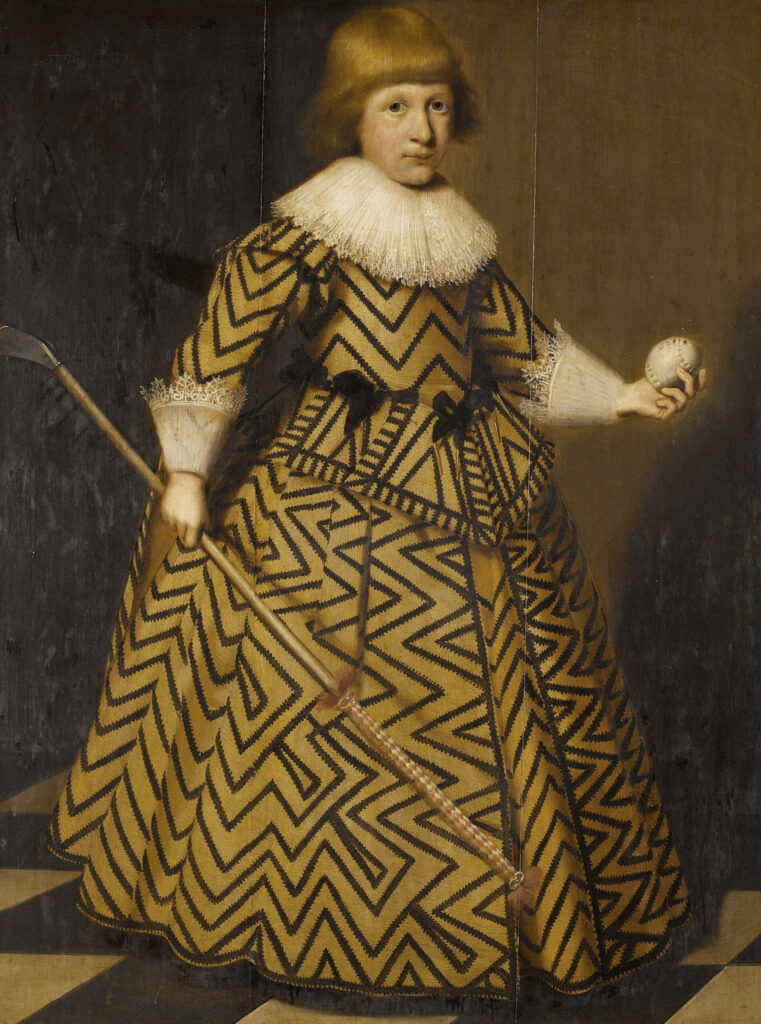
This painting by Wybrand de Geest demonstrates the excellence of 17th-century Dutch portrait art and reveals a lesser-known aspect of European sporting history.
The composition presents a young boy from the Dutch bourgeoisie, captured in a solemn pose holding the attributes of primitive golf: a club in his right hand and a ball in his left, distinctive signs of this aristocratic leisure activity then emerging in the Netherlands. The most striking element remains this extraordinary cape with geometric zigzag patterns in yellow and black, a true technical feat by the painter. This garment reveals the refined taste of merchant elites for precious fabrics and sophisticated ornaments. The white lace collar, an indispensable accessory of the period, delicately frames the youthful face.
Wybrand de Geest’s pictorial technique combines precision of detail with monumentality of composition. The neutral background focuses attention on the figure, while the meticulous rendering of textures – shimmering silk, gossamer lace, wood of the club – demonstrates the artist’s virtuosity in the tradition of Flemish realism.
Further information
- Portrait of a Boy with a Golf Club, by Wybrand de Geest, 1631
- 115.4 x 85.3 cm, oil on panel
- The Rijksmuseum, Amsterdam
- https://www.rijksmuseum.nl/en/collection/object/Portrait-of-a-Boy-with-a-Kolf-Club–306c46a9fafa13093454d519562224c3
Wybrand de Geest (c. 1592-1661), Dutch portraitist active in Leeuwarden in Frisia, belongs to the great tradition of Dutch portraiture of the Golden Age. Specialized in representing the provincial bourgeoisie, he excelled in rendering ceremonial costumes and accessories that revealed social status. His style, characterized by a realistic approach and particular attention to textile details, reflects the influence of the Amsterdam School while maintaining a marked regional identity. This work perfectly illustrates his ability to immortalize the social codes of his era.

